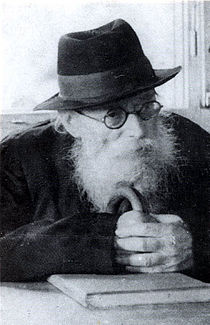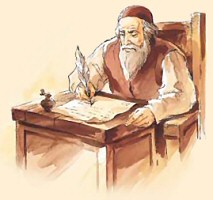
March 5, 1933 was the date of the election that gave the Nazis control of the Reichstag. Because of that, I’d like to discuss Hitler’s rise to power, which is one of the most dramatic and yet unbelievable stories in the history of man.
Hitler is a terrible example of how all of civilization can be irrevocably changed by the presence of one individual. The question is: How could Hitler have done what he did and why did the world let it happen? A study of history shows that the ground was prepared for him. He did not appear in a vacuum.
The German government after the First World War was called the Weimar Republic, controlled basically by two centrist parties, the Social Democratic Party and the Catholic Alliance. Because of the vengefulness of France and England after the war, Germany was required to pay tremendous war reparations. But the armistice allowed the reparations to be paid off in German currency, so in order to meet the payments, the Weimar Republic purposely debased their currency.
In other words, let’s say the German government had to pay a billion marks. A billion marks could, at one time, have been worth a billion dollars, but when you print a billion marks and just throw them out there, then a billion marks is worth ten cents. The Weimar Republic began printing money in denominations of billions and trillions.
That policy effectively knocked the reparations down, but it also destroyed the German middle class. People who had pensions or who lived on fixed incomes were left with nothing. People had to go grocery shopping with wheelbarrows full of money. It has become history’s classic case of hyperinflation. And most of all, it created a large class of dissatisfied people who hated the Weimar Republic.

In the midst of this turmoil, arose two extremes, each of whom wanted to topple the Weimar Republic. On the left were the Communists, and on the right were the “volkishe” parties, of which the Nazi party was only one. This was the fissure that cracked open German society. There were violent strikes in the streets, back and forth fighting, rioting, the red flag waving. People were killed. And the people of Germany, who feared Communism and abhor chaos, sided with the “volkishe” parties, who promised to establish law and order. Better to have law and order and break a few heads than to live with that chaos. In fact, part of the Nazis’ early success was that they mobilized most of the leftist street forces and brought them in under their banner. They performed just as well for Hitler as they would have for the Communists. There’s a certain identity of purpose and style with totalitarian dictators.
Hitler still may not have made it. The Nazi party was not a major force in German politics in the 1920’s. But then, destiny intervened with the stock market crash of 1929. The Great Depression wreaked havoc in Germany. Hundreds of thousands of people were unemployed. People were starving. And the Weimar Republic was incapable of dealing with it.
People want instantaneous, easy, solutions. They want a savior. They also want a scapegoat. Hitler provided both. He was the savior, and the Jews were the scapegoat. And that lethal message brought more death and destruction than was seen in all human civilization.
For more on the dramatic yet tragic 20th century, please check out our documentary film series, Faith and Fate.











